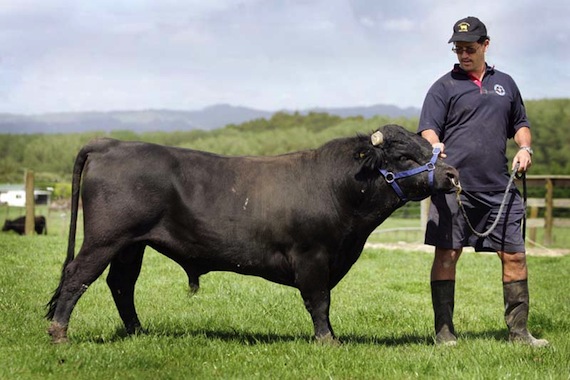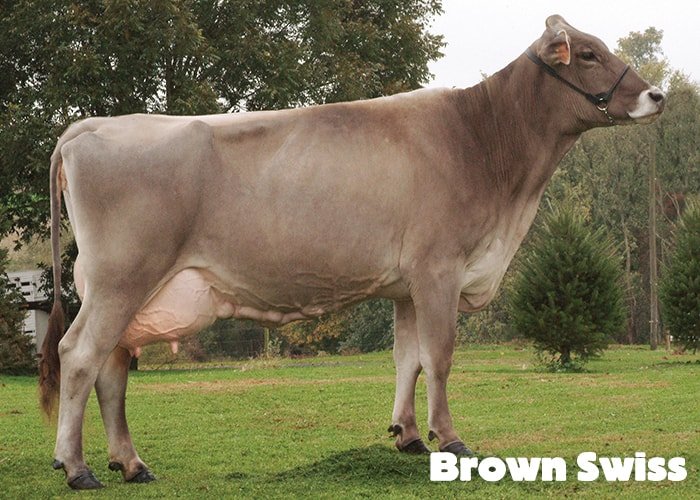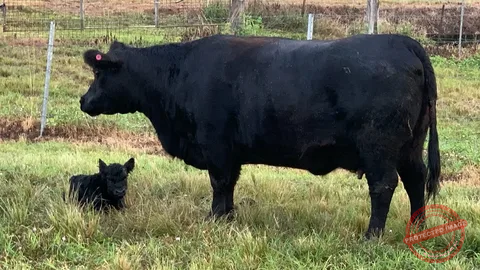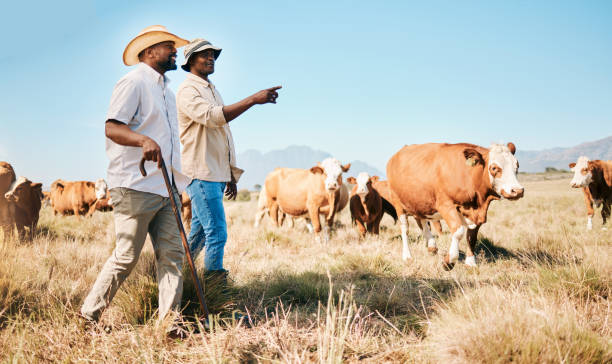If you’ve ever driven through the countryside and spotted a herd of black cows with a perfect white belt around their middle, you’ve met the Belted Galloway. Or as we farmers like to call them—“Belties.” There’s something almost royal about their appearance. Maybe it’s that crisp white band, or the way they stand out against green hills and misty skies. Whatever it is, Belted Galloways don’t just look special—they are special. They’re hardy, low-maintenance, and carry a rich history that stretches back hundreds of years.
When I first started raising cattle, I didn’t plan on owning Belties. I’d heard about them, sure—those funny-looking cows from Scotland—but I figured they were more for show than for serious farming. Then one stormy winter changed my mind. My Angus and Herefords struggled against the cold, but the neighbor’s Belties? They were out in the sleet, grazing calmly as if it were a sunny spring day. That was my turning point. I realized these cattle weren’t just pretty—they were built for survival.
The more I learned, the more I admired them. The Belted Galloway isn’t your average heritage breed. It’s a story wrapped in black and white—one of resilience, flavor, and quiet strength. These cattle have adapted over centuries to thrive in harsh, wet climates. They don’t demand much, but they give plenty in return. Whether you’re in it for beef quality, conservation grazing, or simply the joy of keeping livestock that connects you to agricultural history, Belties make their case loud and clear.
A Brief Stroll Through History
The Belted Galloway breed hails from the rugged hills of southwest Scotland, in a region known as Galloway. This isn’t gentle land—it’s windy, wet, and unpredictable. Yet for centuries, local farmers bred cattle that could not only endure those conditions but prosper in them. The “belt” we see today likely came from crossing ancient Galloway cattle with Dutch Lakenvelders sometime in the 17th century.
What makes them heritage? It’s not just age—it’s survival without heavy intervention. Belted Galloways have remained true to their origins. They’re unaltered by modern industrial breeding, which means what you see today is close to what grazed those Scottish hills hundreds of years ago. When you raise them, you’re not just keeping cattle—you’re preserving living history.
Why Belted Galloway is a Farmer’s Dream
Ask any farmer who keeps Belties, and you’ll hear the same thing: these cattle take care of themselves. Their double-layered coat is like a built-in winter jacket. The outer coat sheds rain and snow, while the soft undercoat keeps them warm even in freezing temperatures. That means they don’t waste energy trying to stay warm, which helps them maintain weight and produce rich, flavorful beef year-round.
And let’s talk temperament. Some breeds are jumpy, some are stubborn. Belties? Calm and friendly. They’re the kind of cattle that meet you halfway across the pasture just to see what you’re up to. If you’ve ever had to chase a panicked steer through a muddy field, you’ll know how valuable that temperament is.
Beef Quality That Speaks for Itself
Now, for those raising cattle for meat—Belted Galloway beef has a reputation that’s second to none. It’s lean but marbled, rich yet clean-tasting. Because these cattle aren’t fed to bulk up unnaturally fast, their meat develops slowly, producing deep flavor and tenderness that grass-fed enthusiasts rave about.
Here’s a little story: the first time I processed one of my Belties, I expected good beef. What I didn’t expect was the taste difference. Even after all these years, I still remember the first bite—earthy, buttery, and honest. That meal changed how I thought about quality meat. It wasn’t just about yield anymore. It was about connection—to land, to animal, and to time.
The Underrated Beauty of Dun Belted Galloway Cattle
Everyone knows the classic black-and-white Beltie, but have you ever seen the dun belted galloway cattle? They’re stunning—soft brown coats with that same signature white band. There’s something almost mystical about them in early morning light, like they belong in a painting. Duns are rarer, but they’re every bit as hardy and efficient as their black counterparts. If you’re looking to add visual diversity to your herd—or just want something a bit different—dun Belties are a treat.
Perfect for Small Farms and Sustainable Systems
You don’t need a massive operation to raise Belted Galloways. In fact, they’re perfect for small and medium-sized farms. They thrive on rough forage, and they don’t tear up pastures as some heavier breeds do. Their ability to graze efficiently on marginal land makes them ideal for regenerative farming systems. They turn what might look like scrubby hillsides into productive ground.
If you’re into sustainable or organic farming, this breed fits like a glove. No excessive grain feeding. No dependency on antibiotics. Just healthy soil, hardy cattle, and high-quality beef.
How to Care for Belted Galloway Cattle
Taking care of Belties is refreshingly straightforward. Here’s a quick guide based on what’s worked for me:
1. Shelter and Climate:
They handle cold and rain remarkably well, but provide windbreaks or trees for comfort. In hot climates, shade and water access are key since their thick coats can make summers uncomfortable.
2. Feeding:
They do best on good-quality pasture or hay. Don’t overfeed grain—it’s unnecessary and can compromise their natural efficiency. They love a mix of grasses and clovers.
3. Fencing:
They’re not escape artists, but sturdy fencing keeps them safe from predators. I’ve found electric perimeter lines helpful, especially for young stock.
4. Health and Breeding:
Belties have strong immune systems. Still, regular deworming, mineral supplements, and vaccination schedules should be maintained. Calving is usually trouble-free, another reason I trust this breed completely.
5. Companionship:
These cattle are social. They graze and rest together, and they bond with handlers quickly. If you have just one or two, make sure they have companionship—cattle don’t thrive in isolation.
Common Questions About Belted Galloways
Are Belted Galloways good milkers?
Not particularly. While they can provide enough milk for their calves, they aren’t dairy animals. Their milk is rich but produced in smaller quantities.
Do Belted Galloways require special grooming?
No fancy grooming needed. Their natural double coat handles weather and dirt well. They shed in spring, and a good brush helps keep them comfortable.
Can Belted Galloways live with other breeds?
Yes, they mix well with other docile breeds. I’ve had them graze alongside Angus and Dexters without issues.
Are Belted Galloways profitable?
Absolutely. Between low maintenance costs, premium beef, and the growing interest in heritage breeds, they can be quite rewarding—financially and personally.
The Heritage Value of Keeping Belties
Keeping Belted Galloways isn’t just about profit. It’s about continuity. Each Beltie you raise connects you to generations of farmers who relied on instinct, land, and respect for nature. There’s pride in preserving that link, especially in a world that often prioritizes convenience over character.
I often tell visitors, “When you see a Beltie in your pasture, you’re seeing history walking on four legs.” And it’s true. They represent an old-fashioned kind of success—the kind built on patience and partnership with nature.
Why They’re Still Winning Hearts Today
In an age of automation and rapid change, Belted Galloways remind us that not everything needs upgrading. Sometimes, the old ways still work best. They don’t need constant pampering, yet they give you beef, beauty, and balance. They’ve adapted to survive, and they’ll teach you a thing or two about resilience if you let them.
Thinking About Getting Started?
If you’re new to livestock, starting with Belties is one of the smartest moves you can make. Visit local breeders, attend heritage livestock shows, and talk to farmers who’ve raised them for years. You’ll find a community that’s as welcoming as the cattle themselves.
There’s no pressure with Belties—just quiet, steady rewards. Watching a herd of dun belted galloway cattle grazing on a foggy morning can remind you why you fell in love with farming in the first place.
Final Thoughts
Raising Belted Galloways is more than just livestock management—it’s a partnership. They give back exactly what you put in, maybe even more. They’re beautiful, practical, and enduring, much like the land they were born from. Whether you’re drawn to their heritage, their temperament, or that unforgettable look, you’ll find that Belties quickly earn their place in your heart and on your farm.
So the real question is—are you ready to bring a piece of living history into your pasture and see what these remarkable cattle can teach you?



